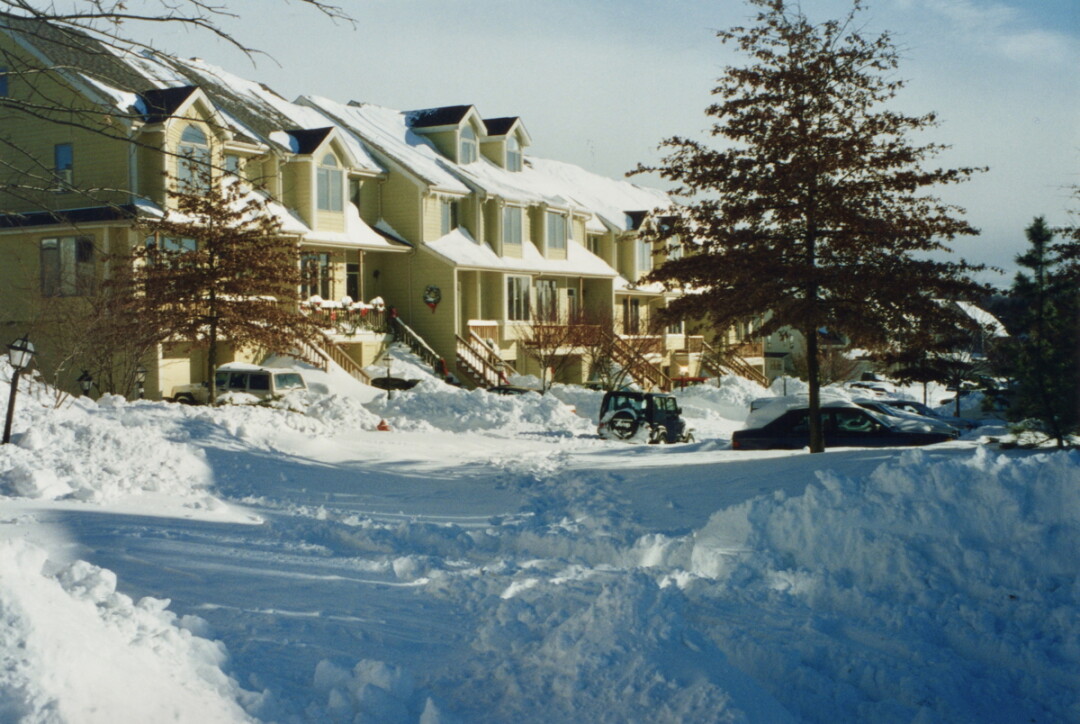Winter Layers
peeling back the accumulation of winter reveals the earth – and ourselves

In 1996, I was 16 and living in Bethesda, Maryland (January mean temperature: 37 degrees). One ordinary brown January afternoon, my siblings and I went to see 12 Monkeys. While we sat in the dark theater, a surprise Nor’easter snuck over the East Coast. A couple of hours later we emerged and stared at the swirling blankness outside the theater. Everything white everywhere.
“It’s snowing,” I said, because what else was there to say?
It snows in Bethesda, of course, but usually just an inch or two, enough to cancel school. I had never seen this much snow. It was like being caught inside a big wave at the beach.
We stomp on a milky ice puddle, which shatters like a dozen piano keys pressed at once. As we approach the schoolyard, my kids groan; morning recess will be indoors. “It’s not that cold,” I try to say, but my mouth is numb and clumsy.
It snowed Saturday evening until Monday morning. High winds piled snow into car-swallowing drifts. An Alberta Clipper brought more snow on Tuesday just as the D.C. Metro’s few plows were finishing the highways. They started over. On Wednesday, my brother needed to return to college, and we were out of food, so we requisitioned our neighbors’ shovels and dug to the snow emergency route. (Total days trapped in our house: four. Total inches of snow: about 22.)
In Wisconsin, less than two feet of snow over a few days would be an unnamed inconvenience. But in D.C., the Blizzard of ’96 was a disaster along with other famous D.C. snowstorms: Snowmageddon of 2010 (17 inches), the Great Arctic Outbreak of 1899 (20 inches), and the Knickerbocker Storm of 1922 (28 inches). The Blizzard of ’96 shut down federal and state governments. In the D.C. metro area alone, it caused $585 million in damage and killed 60 people. Much of this damage happened on an unseasonably warm, rainy day when everything melted in 12 hours.
I share this story to illustrate my understanding of snow before moving to Wisconsin: ephemeral and occasionally apocalyptic.
Now I understand snow’s durability. On the way to school, my son and I skitter a chunk of ice between us like a soccer ball, something I couldn’t do in Maryland where ice has a limited shelf life.
We walk through canyons sculpted by an army of snowblowers. Striations in the canyon walls record winter’s production. The snowfall of Feb. 17 covered the layer from Feb. 10 and so on, each layer preserved by subsequent layers. At the very bottom is icy November through early December, which melted and refroze before Christmas.
Those bottom layers may as well be rock, and when spring comes, they will erode in reverse chronological order to reveal artifacts: sticks, wrappers, pinecones, tools, shovels, sleds.
The kids screw their feet into the sidewalk to make snow squeak like chalk, so different from the drumph, crumph of the warm snow I grew up with.
On cold days like this, I need my own layers. Satiny long underwear hugs my torso and arms. Over that, a blouse, fleece, down vest, and finally the Columbia jacket I bought my first winter in Wisconsin. The jacket is too big, it’s filthy, and I’ve replaced the zipper twice, but when I shrug my shoulders, the warm atmosphere inside puffs out of the high collar and envelopes my neck. I’m also wearing two pairs of socks, and three pants. All for our morning commute.
We stomp on a milky ice puddle, which shatters like a dozen piano keys pressed at once. As we approach the schoolyard, my kids groan; morning recess will be indoors. “It’s not that cold,” I try to say, but my mouth is numb and clumsy. Meanwhile, under this brazen Midwestern attitude, my reptilian brain – the part formed in Maryland – sighs in relief that my children will be safe and warm inside.
Snow is ephemeral, and snow is durable. Cold is deadly, and it is endurable. As a Southerner I fear all winters, even the mostly mild winters of Maryland, but as a Midwesterner I’ve come to embrace the harshness of Wisconsin’s months-long deep freeze. Somehow these truths do not contradict.
Without the kids with me, I walk faster. Soon I unzip my jacket and shed the scarf crusted with ice from my own breath, ignoring the incredulous inner reptile who cannot believe what I’m doing, it is below zero. Soon, I’ll put that scarf away in the closet when spring reveals our soft underneaths, uncalloused and vulnerable after a winter cocooned in our own atmospheres.
In spring, my soft Southern self will re-emerge and assert its dominance. It will carry me through the warmer seasons, drawing me to the beach, accumulating tan lines and calloused feet, complaining that 85 degrees is too chilly for Fairfax Pool.
My Southern self will forget about winter until one November or, even, October day when with an awe that unites both my Southern and Midwestern selves, I will look up and say “It’s snowing.”






















